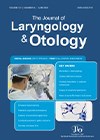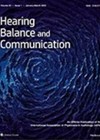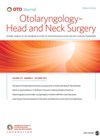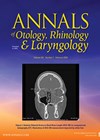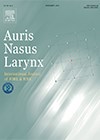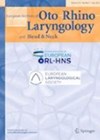
Journal Reviews
Elevated intracranial pressure versus migraines versus sinusitis?
This narrative review discusses the challenges faced by an otolaryngologist to differentiate elevated intracranial pressure (eICP), migraines and chronic rhinosinusitis (CRS). Facial pain, pressure, aural fullness, muffled hearing and tinnitus are often common symptoms described by patients with all three...
Management of traumatic facial palsy
Most traumatic facial palsies resolve with conservative management. Early facial nerve decompression is indicated in acute complete traumatic facial palsies. House–Brackmann (HB) classification is used universally to classify the severity of the facial nerve injury, but few centres have availability...
Keep on moving
This study compared the differences in localisation of sound between those with symmetrical hearing within normal limits (NH) and those with single-sided deafness (SSD). Unsurprisingly, those with SSD took longer to localise sounds and had a higher error rate. Although...
A comparison between artificial and cadaveric temporal bones in terms of providing realistic setting and structural details
Increasing difficulties, costs and risks of infection have led to the use of artificial temporal bones for training in mastoid and middle ear surgery. Whether these provide a realistic learning environment (face value) and offer structural details to learn from...
The cocktail party conundrum
I feel, with slight sadness and disappointment, that a good cocktail party, dresses, punch bowls and all is not currently in its heyday and, therefore, opportunity of attending is slim. However, from what I remember, they tend to be a...
Expectations and practice
Reading this paper is reassuring. It does not appear to be groundbreaking in its results but research can be as useful, if not more so, when it consolidates knowledge and helps unify the research base. This paper focuses on those...
Temporal bone fractures in children – are we doing enough?
This is a retrospective study which assessed clinical presentation and prognosis in 91 children under the age of 18 who developed temporal bone fractures from trauma, the commonest of which was falls from heights followed by motor vehicle accident. The...
Cognitive development in children with cochlear implants
This systematic review investigates the comparative cognitive outcomes in children using bilateral versus unilateral cochlear implants, as well as those using cochlear implants versus hearing aids. The review synthesises findings from 30 studies involving a total of 11,986 children and...
Canal cholesteatoma
This is a retrospective study of patients with external auditory canal cholesteatoma (EACC) managed at a single tertiary centre from 1 January 2010 to 1 January 2021. Ninety patients (100 ears) were included. Mean age at diagnosis was 56+23 years....
Hear me out – tiny steroid implants for fighting meningitis-induced deafness
Sensorineural hearing loss is the most common neurological complication of pneumococcal meningitis. Bacterial infiltration into the inner ear triggers inflammation, leading to cochlear fibrosis and sclerosis – damage that, in over a third of cases, affects both ears. Current Infectious...
Management of patulous eustachian tube dysfunction
Idiopathic sudden sensorineural hearing loss (iSSNHL) is defined as a hearing loss of 30 dB or more at three contiguous frequencies within 72 hours, with acute low-tone hearing loss (ALHL) excluded from this category. Despite standard treatment, outcomes vary: one-third...
Endolymphatic pressure disturbances precede endolymphatic hydrops on MRI in definitive Ménière’s disease
The diagnosis of Ménière’s disease is clinical, and the authors tried to verify if endolymphatic hydrops (EH) could be demonstrated on MRI. In this prospective study, they analysed 3D3T FLAIR MRI images of 32 ears with definitive Ménière’s disease (DMD)...





